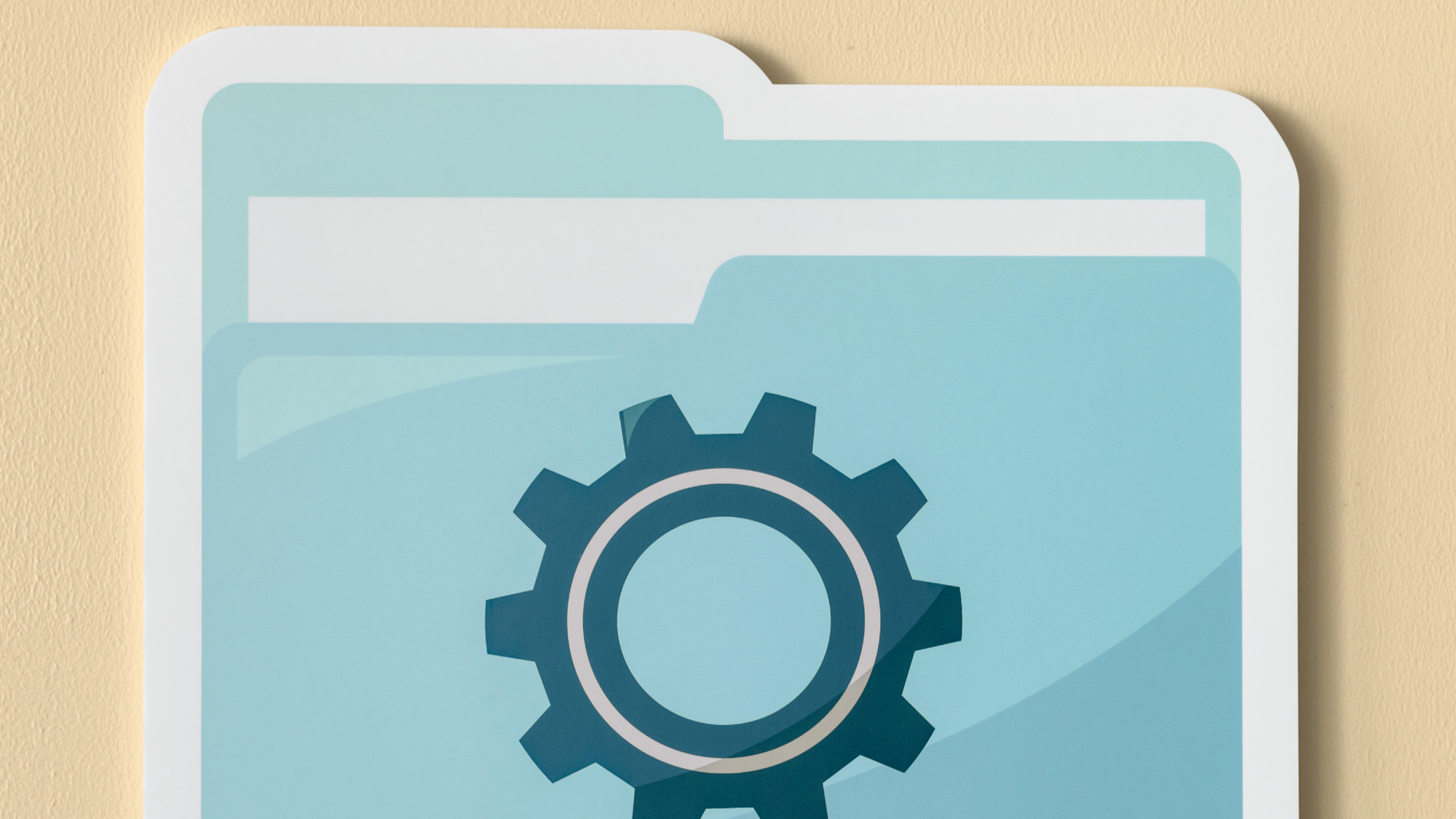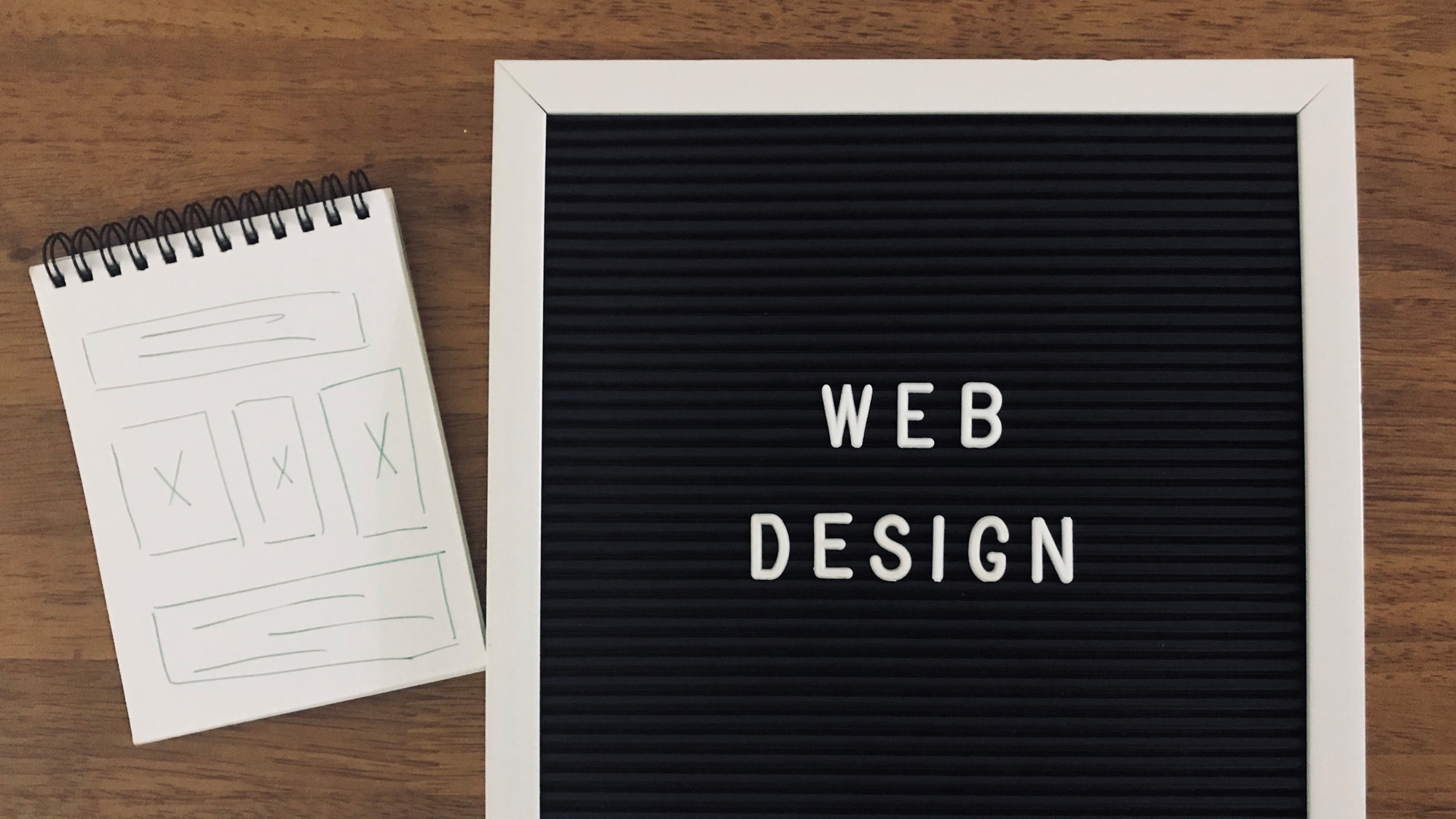Author Info
Unlock your brand’s full potential with NDEXT’s cutting-edge design and marketing services. Contact us today to discover how we can transform your ideas into impactful digital experiences that captivate and engage.
NDEXT® is a forward-thinking digital platform dedicated to exploring and sharing the latest trends in technology, marketing, and design. With a commitment to delivering cutting-edge insights and innovative strategies, NDEXT® serves as a resource for professionals seeking to stay ahead in the ever-evolving digital landscape.
Find Out If Your Website Passes The Test
Your website is often the first impression potential customers have of your business. It’s your digital storefront, working 24/7 to attract, engage, and convert visitors into loyal customers. But what if, instead of drawing people in, your website is silently driving them away?
In the digital world, a subpar website isn’t just an inconvenience—it’s a business liability. Research shows that 75% of consumers judge a company’s credibility based on its website design (Stanford University). If your site looks outdated, loads slowly, or doesn’t work well on mobile devices, visitors are far less likely to stick around or trust your brand.
But here’s the challenge: it’s easy to overlook website issues when you’re busy running a business. A site that once worked well can quietly fall behind, and before you know it, you’re losing potential customers to competitors with cleaner, faster, and more intuitive websites.
So, how can you tell if your website needs a redesign? In this post, we’ll walk through six telltale signs that your site might be costing you customers. From slow load times to inconsistent branding, these insights will help you understand when it’s time for a refresh—and how a well-executed redesign can elevate your online presence and supercharge your growth.
Let’s dive in.

Sign #1: Slow Load Times – The Silent Customer Repellent
Website speed isn’t just a technical concern—it’s a critical factor influencing user experience, search engine rankings, and ultimately, your bottom line. In the era of instant gratification, users expect web pages to load almost instantly. If your site drags, your visitors won’t stick around.
Why Speed Matters
According to research from Google, 53% of mobile users abandon a site that takes longer than three seconds to load (Think with Google). In the digital world, three seconds is an eternity. Slow load times can frustrate visitors, damage brand perception, and lead to missed business opportunities.
Beyond user experience, website speed directly impacts search engine optimization (SEO). Google uses page load time as a ranking factor, especially for mobile searches. A slow site may not only lose potential customers but also rank lower in search results, further reducing its visibility
How Slow Load Times Hurt Your Business
1. Increased Bounce Rates:
Visitors who encounter delays often leave without exploring your content. A study by Portent found that conversion rates on sites that load in 1 second are 2.5 times higher than sites that load in 5 seconds (Portent).
2. Lower Search Rankings:
Google’s Core Web Vitals prioritize page experience, with site speed being a crucial component. Slow-loading pages are less likely to rank well, decreasing your chances of organic traffic.
3. Reduced Conversions and Revenue:
Every second counts in e-commerce. Amazon reported that every 100-millisecond delay in load time costs them 1% in revenue (Amazon Web Services)—and while your business may not operate at Amazon’s scale, the principle applies universally.
Common Causes of Slow Load Times
- Unoptimized Images: Oversized images can significantly slow down your site.
- Excessive Plugins: Too many plugins, especially outdated ones, create unnecessary bloat.
- Server Issues: Inadequate hosting resources can throttle performance.
- Poorly Written Code: Inefficient code and excessive redirects contribute to sluggishness.
How to Fix It
Improving site speed doesn’t require guesswork—it requires a strategic, data-driven approach. Here’s what you can do:
1. Compress and Optimize Images:
Tools like TinyPNG and Imagify reduce image file sizes without compromising quality.
2. Leverage Browser Caching:
Enable caching so returning visitors experience faster load times.
3. Minimize HTTP Requests:
Reduce the number of elements on each page, like scripts and images.
4. Choose a High-Performance Hosting Provider:
Opt for reliable hosting services with proven speed and uptime performance.
5. Implement a Content Delivery Network (CDN):
CDNs distribute content across global servers, reducing latency for international visitors
How NDEXT Can Help
At NDEXT, we specialize in optimizing website performance to enhance both user experience and SEO rankings. Our team conducts comprehensive performance audits, pinpoints bottlenecks, and implements tailored solutions that deliver measurable results.
If you suspect your website’s load times are driving customers away, it might be time to take action. Fast, responsive sites don’t just please visitors—they convert them into paying customers.

Sign #2: Outdated Design – When First Impressions Go Wrong
In the digital world, first impressions happen in milliseconds. Studies show that it takes just 50 milliseconds (0.05 seconds) for visitors to form an opinion about your website (Taylor & Francis Online). If your design looks dated, cluttered, or unprofessional, visitors are more likely to bounce before they’ve even read a single line of content.
A modern, visually appealing website signals professionalism, credibility, and relevance. On the other hand, an outdated design can raise red flags, leaving potential customers wondering if your business is still active—or if your products and services are equally outdated.
How Outdated Design Costs You Customers
1. Loss of Trust and Credibility
In a study conducted by Stanford University, 75% of users admitted to judging a company’s credibility based on its website design (Stanford Web Credibility Research). Design isn’t just aesthetics; it’s a trust signal. If your site looks like it hasn’t been updated since 2010, customers will question whether your business is up to date with industry standards.
2. Higher Bounce Rates
Visitors encountering cluttered layouts, inconsistent visuals, or confusing navigation are more likely to click away. Research from HubSpot indicates that 38% of users will stop engaging with a website if the content or layout is unattractive (HubSpot).
3. Competitive Disadvantage
Your competitors are investing in sleek, responsive websites. If potential clients find a more visually appealing, user-friendly site elsewhere, they won’t think twice about choosing them over you.
Common Causes of Slow Load Times
- Unoptimized Images: Oversized images can significantly slow down your site.
- Excessive Plugins: Too many plugins, especially outdated ones, create unnecessary bloat.
- Server Issues: Inadequate hosting resources can throttle performance.
- Poorly Written Code: Inefficient code and excessive redirects contribute to sluggishness.
How to Fix It
Improving site speed doesn’t require guesswork—it requires a strategic, data-driven approach. Here’s what you can do:
1. Compress and Optimize Images:
Tools like TinyPNG and Imagify reduce image file sizes without compromising quality.
2. Leverage Browser Caching:
Enable caching so returning visitors experience faster load times.
3. Minimize HTTP Requests:
Reduce the number of elements on each page, like scripts and images.
4. Choose a High-Performance Hosting Provider:
Opt for reliable hosting services with proven speed and uptime performance.
5. Implement a Content Delivery Network (CDN):
CDNs distribute content across global servers, reducing latency for international visitors
How NDEXT Can Help
At NDEXT, we specialize in optimizing website performance to enhance both user experience and SEO rankings. Our team conducts comprehensive performance audits, pinpoints bottlenecks, and implements tailored solutions that deliver measurable results.
If you suspect your website’s load times are driving customers away, it might be time to take action. Fast, responsive sites don’t just please visitors—they convert them into paying customers.

Sign #3: Poor Mobile Experience – When Your Site Fails on the Go
It’s no secret: mobile devices have become the go-to gateway for internet access. In fact,around 60% of global web traffic now comes from mobile devices (Statista). If your website isn’t mobile-friendly, you’re not just missing out on potential customers—you’re actively pushing them toward competitors who offer a smoother mobile experience.
Mobile users expect websites to load quickly, display content correctly, and be easy to navigate with a simple tap of the finger. A frustrating mobile experience can lead to high bounce rates, lost sales, and diminished trust in your brand.
How Poor Mobile Experience Costs You Customers
1. High Bounce Rates from Mobile Users
Google reports that 61% of users are unlikely to return to a site they had trouble accessing on mobile—and 40% will visit a competitor’s site instead (Think with Google).
2. Lower Search Engine Rankings
Google implemented mobile-first indexing, meaning it primarily evaluates your site’s mobile version when determining search rankings. A non-responsive or poorly optimized mobile site will struggle to rank competitively in search engine results.
3. Lost Revenue Opportunities
Mobile commerce (m-commerce) continues to grow exponentially. Research from Insider Intelligence projects that mobile commerce sales will reach $710 billion in the U.S. alone by 2025 (EMarketer). If your mobile site is difficult to navigate, you risk losing sales to competitors with more streamlined mobile experiences.
Common Mobile Experience Pitfalls
- Text that’s too small to read
- Buttons that are hard to tap without zooming
- Content that doesn’t fit the screen
- Slow load times on mobile networks
These issues lead to frustration, abandonment, and missed engagement opportunities.
Key Elements of a Mobile-Friendly Website
1. Responsive Design:
Use flexible grids and layouts that adapt to any screen size—whether it’s a smartphone, tablet, or desktop.
2. Thumb-Friendly Navigation:
Design with mobile users in mind by placing interactive elements within easy reach of the thumb.
3. Optimized Images and Media:
Compress images and videos to load efficiently without sacrificing visual quality.
4. Simplified Navigation:
Mobile users don’t want to dig through endless menus. A clean, concise navigation structure enhances usability.
5. Touch-Friendly Buttons:
Make buttons large enough to tap easily—without accidental clicks on adjacent elements.
How NDEXT Can Help
NDEXT specializes in crafting mobile-first websites that perform flawlessly across devices. From responsive design to performance optimization, we ensure your site provides a smooth, engaging experience no matter where your customers are.
If your website still feels like it was built for desktops in a mobile world, let’s change that. A mobile-friendly design isn’t just a convenience—it’s a necessity for modern business success.

Sign #4: Low Engagement and High Bounce Rates – When Visitors Don’t Stick Around
A website’s success isn’t measured by how many people visit—it’s measured by how many people stay, engage, and convert. If visitors land on your site but leave within seconds, it’s a sign that something isn’t working. High bounce rates and low engagement often point to deeper design, content, or functionality issues that need immediate attention.
According to Contentsquare’s 2023 Digital Experience Benchmark Report, the average bounce rate across industries is 47% (Contentsquare). If your site exceeds that, it’s time to take a closer look at what might be driving users away.
How Low Engagement Hurts Your Business
1. Missed Sales Opportunities
A high bounce rate means visitors leave before taking meaningful action—whether that’s making a purchase, filling out a contact form, or signing up for a newsletter.
2. Reduced SEO Performance
Google monitors engagement metrics like time on page and click-through rates. Sites with low engagement are less likely to rank well in search results, reducing organic traffic.
3. Wasted Marketing Spend
Every ad click, email campaign, or social post that drives traffic to your site is an investment. If visitors leave immediately, that investment goes to waste.
Why Visitors Leave: Common Causes of Low Engagement
- Slow Load Times: Visitors won’t wait for a slow website. (See Sign #1 for more on this.)
- Confusing Navigation: If users can’t find what they’re looking for within seconds, they’ll give up.
- Unclear Messaging: Visitors need to understand what you offer and why it matters—immediately.
- Outdated or Unappealing Content: If your content feels generic or your design looks dated, engagement will suffer.
Key Strategies to Boost Engagement
1. Simplify Navigation:
Follow the “three-click rule”: visitors should reach any piece of content within three clicks.
2. Craft Compelling Headlines and Calls-to-Action (CTAs):
Headlines should grab attention. CTAs should be clear, persuasive, and easy to find.
3. Leverage Interactive Content:
Tools like quizzes, calculators, or interactive infographics can significantly boost engagement.
4. Improve Readability:
Use short paragraphs, bullet points, and clear headings. Walls of text are engagement killers.
5. Analyze and Adapt:
Use tools like Google Analytics and Hotjar to track user behavior and identify problematic pages.
How NDEXT Can Help
We help businesses analyze their engagement metrics, identify weak spots, and implement design and content changes that captivate visitors and encourage meaningful interactions.
If your website feels more like a revolving door than a conversion machine, it’s time for a change. Let NDEXT help you build a site that turns visitors into customers—and customers into brand advocates.

Sign #5: Inconsistent Branding or Messaging – When Your Website Sends Mixed Signals
Brand consistency is more than just using the same logo or color scheme across your website. It’s about delivering a cohesive, recognizable experience that reinforces who you are, what you stand for, and why customers should choose you. Inconsistent branding or messaging creates confusion, dilutes trust, and can ultimately cost you business.
According to a study by Demand Metric, consistent brand presentation across all platforms can increase revenue by an estimated average of 23% (DemandMetric). If your website tells one story while your social media, ads, or packaging tell another, you risk alienating potential customers.
How Inconsistent Branding Impacts Your Business
1. Confused Visitors
Imagine walking into a store where the signage doesn’t match the products inside. A website with inconsistent visuals or messaging creates the same disorienting effect. Visitors who can’t easily understand who you are or what you offer are less likely to trust your brand.
2. Weakened Brand Recognition
Consistency helps people recognize and remember your business. Research from Forbes shows that color improves brand recognition by up to 80% (Forbes). If your site’s palette, fonts, and tone vary across pages, your brand becomes less memorable.
3. Missed Emotional Connection
Branding is more than visuals—it’s the emotional experience customers have when interacting with your business. Inconsistent messaging makes it harder to build a strong, lasting connection.
Common Signs of Inconsistent Branding
- Mismatched Colors and Fonts: Different pages use varying colors, fonts, or button styles.
- Conflicting Messaging: Pages describe your business differently or use inconsistent tones.
- Logo Variations: Different versions of the logo appear across the site without clear guidelines.
- Disjointed Visuals: Photography and design styles feel random rather than intentional.
The Psychology of Brand Consistency
Humans are pattern-seeking creatures. When customers encounter familiar visuals, phrases, and interactions across your website, they subconsciously associate your brand with reliability and professionalism. Consistency helps build that trust, making users more likely to convert.
Steps to Achieve Consistent Branding
1. Develop a Brand Style Guide:
Outline rules for colors, fonts, logo usage, and design elements to maintain consistency.
2. Unify Tone and Messaging:
Ensure your website content aligns with your brand’s voice—whether it’s friendly, professional, or bold.
3. Audit Existing Content:
Regularly review your site to identify and correct inconsistencies.
4. Use Templates:
Design page templates to ensure structural consistency across your website.
5. Collaborate Across Teams:
Marketing, design, and development teams must work together to maintain branding integrity.
How NDEXT Can Help
We work with businesses to create websites that reflect their brand consistently and compellingly. Our team ensures every visual, word, and interaction aligns with your brand’s identity—so visitors know exactly who you are from the moment they arrive.
If your website feels like a patchwork of styles and messages, it’s time to streamline your branding for better engagement, recognition, and growth.

Sign #6: Inconsistent Design – When Your Website Feels Disjointed
A well-designed website should feel intuitive, familiar, and easy to navigate. When users move from page to page, they should encounter a cohesive visual and functional experience. If they don’t—if buttons shift sizes, layouts vary wildly, and design elements feel inconsistent—they’ll quickly lose confidence in your site and, by extension, your business.
Design consistency isn’t about making every page look the same; it’s about maintaining a clear, predictable structure that guides users effortlessly through your site. Research by NNGroup indicates that users’ satisfaction with a website is significantly influenced by visual consistency and ease of navigation (NNGroup).
How Inconsistent Design Costs You Customers
1. Increased Cognitive Load
Every inconsistency forces users to pause and reorient themselves. If each page looks or functions differently, users expend mental energy just figuring out how to navigate, reducing their overall satisfaction.
2. Reduced Trust and Professionalism
A disjointed website can feel unprofessional or hastily built. If your site lacks polish, visitors may question the quality of your services or products.
3. Higher Bounce Rates and Lower Engagement
When users get frustrated, they leave. Inconsistent design patterns—like a button that changes location or color from one page to the next—create friction that drives visitors away.
What Does Inconsistent Design Look Like?
- Inconsistent Button Styles: Buttons should maintain uniform shapes, sizes, and hover effects across the site.
- Varied Page Layouts: Different templates for similar types of content make navigation more difficult.
- Shifting Typography: Fonts, sizes, and text alignment should be consistent for readability and aesthetic appeal.
- Inconsistent Iconography and Imagery: Icons and images should follow a cohesive style and color scheme.
The Role of Design Systems
Many businesses overlook the importance of design systems—a set of standardized guidelines that ensure consistency across all web pages. A robust design system includes rules for:
- Color palettes
- Typography
- UI elements (buttons, forms, icons)
- Layout grids and spacing
By following a design system, businesses can create a seamless user experience that feels familiar and intuitive.
Practical Steps to Achieve Consistent Design
1. Create a Design System:
Develop a style guide that covers every visual and interactive element.
2. Use Templates and Components:
Build reusable templates for recurring pages like product listings, blog posts, and contact forms.
3. Conduct Regular UX Audits:
Periodically review your site to identify and address inconsistencies.
4. Work with Experienced Designers:
Professional web designers understand the nuances of consistency and can implement best practices effectively.
5. Leverage Modern Design Tools:
Tools like Figma, Sketch, and InVision allow teams to collaborate and maintain consistency across projects.
How NDEXT Can Help
At NDEXT, we prioritize design consistency as a core element of website development. We build and maintain design systems that ensure every aspect of your site—from buttons to navigation menus—feels cohesive, intuitive, and professional.
A consistent, well-structured website isn’t just more pleasant to use; it’s more effective at converting visitors into customers. If your site feels disjointed or inconsistent, we’re here to help bring it back into harmony.

Conclusion: Is It Time for a Website Redesign?
Your website isn’t just a digital placeholder—it’s your most powerful marketing tool. If it’s plagued by slow load times, outdated design, mobile usability issues, low engagement, inconsistent branding, or disjointed design elements, you could be losing customers without even realizing it.
A website redesign isn’t just about aesthetics; it’s about functionality, trust, and growth. At NDEXT, we help businesses like yours build high-performing, visually compelling websites that deliver results.
If any of these signs sound familiar, let’s talk.
Contact us today to discuss how we can help transform your website into a customer-converting powerhouse.
Join the revolution of digital marketing with NDEXT® and embrace a partnership that propels your brand towards remarkable growth and success. Contact us today to see how our innovative solutions can tailor your needs into exceptional results.
Contact NDEXT® Now | Reach Out Via Email
Your brand’s future is just a click away. Don’t wait—unlock the potential of AI with NDEXT® now!


